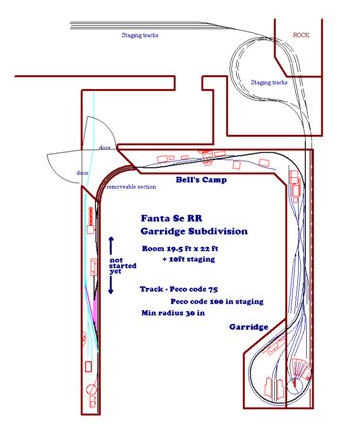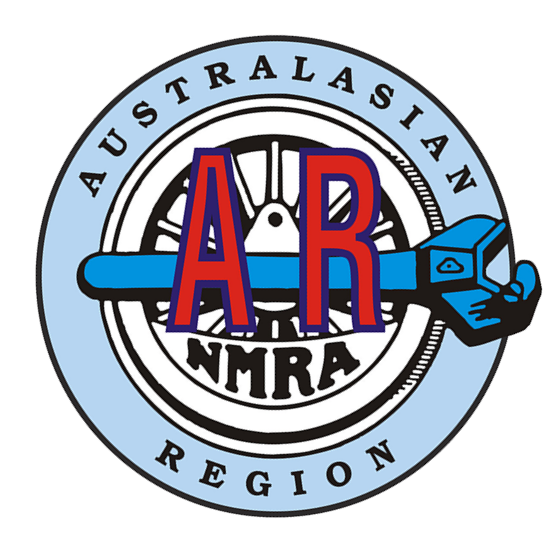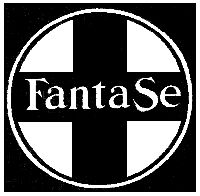by David Latham
I built my first layout of a decent size at a house in Oatley, NSW. A room 20 feet by 14 feet was excavated beneath the house in 1995. The layout shared space with my wine collection so the ‘Sella Sub-division’ was born.
The HO scale layout featured an around the walls design with a central peninsula. Trains traversed the room twice leaving from and arriving at the same double-ended staging yard which lay beneath the major crew change town. Trains never appeared in the same scene twice courtesy of disguised tunnels and cuttings.
The layout was set in about 1956 somewhere on the ATSF. Peco code 100 flextrack and points were used on cork roadbed. Most structures were kits but as my modelling talent improved and specific needs developed, several structures were kit-bashed and scratchbuilt. The layout was originally wired for 2-cab DC but was converted to DCC (System One) in 1998.
Towns along the right-of-way were named after obscure wine grape varieties, such as Carignane and Durif and in alphabetical order from west to east. This helped operators to place their trains on the layout scheme. At the time that I moved from this house in 2003, the scenery on the layout was about half finished. I had made enough mistakes to learn how to avoid them on the next layout. Most of the structures were saved from the demolition ball, to be reused on the new layout.
Fanta Se Garridge Sub-division
The Garridge Subdivision was born out of a house move in July, 2003. I again modelled in HO scale but have used Peco code 75 track and points; the old code 100 is used in staging. The System One DCC is carried over from the Sella Sub.
I have kept the era to the mid 1950s but the locale is now in the mid-west USA (read ‘no mountainous scenery’) on the ATSF system. The layout is built in an over-size (20 ft x 22 ft) double garage and hangs off two walls. The third wall expansion is planned for the near future. A plywood shelf 2 feet deep supports the roadbed which is now made of 3mm x 25mm draught-excluding tape, used for its sound-deadening potential. As the layout has to share space with two cars, the shelf is at such a height that a car’s door can open beneath, i.e. about 5 feet. A hole was punched through the back wall and two double track staging return loops installed. This part of the layout, i.e. the city of Garridge, operates loop to loop and is basically a large switching area. Peco switch machines control the points on the main while push / pull rods through the fascia are used to open and close the points at the industries. A large section at the garage front is hinged and provides a section of track to connect the staging and the layout proper.
Lots of scenic details have yet to be added. There is plenty of operating potential in this area, with 5 industries (all with more than one loading track), loco servicing and small yard to be handled. Through freight, passenger trains and local peddlers will eventually be added to the operating schedule.
A branch line starts along the back wall and will eventually extend to the other side wall. Bell’s Camp is the name given to the first town found on the branch line and is populated with Campbells kits, a line of high quality and detailed structures not often found in Australia.I have tried my hand at hand laying turnouts in this area and like most activities, the more made the easier it becomes. I treated them as separate pieces (rather than laying directly to the roadbed) by spiking the track to slabs of 3mm balsa (the same thickness as the roadbed) which were then connected to the flextrack.
During my childhood, my father had built a railway over the table-tennis table using Triang track and rolling stock. It wasn’t until my son’s 4th birthday in 1989 that trains entered my life again, courtesy of “Thomas the Tank Engine and Friends”. My interest in model trains grew so I joined the NMRA in 1991 and haven’t looked back since. I earned a Golden Spike Award in 1999 for the Sella Sub and have since been awarded Achievement Programme certificates in Electrical Engineer (2001), Civil Engineer (2001) and Association Volunteer (2003). I’m well on the way to three other certificates. I won best model in show at the 2006 Australia NMRA convention for my scratchbuilt ATSF 120′ through-truss turntable. Being a member of the NMRA and its Achievement Programme have provided the incentive I have needed to improve my modelling talents and the other members have been a fountain of information.

Addendum 2015:
Tortoise switch machines have replaced the Peco switch motors in the Garridge area.
The small yard has been expanded to three tracks capable of holding 16 cars each and one holding 6 cars (waycar track).
The branch now extends to the end of the third wall (to the garage door) via a lift-out bridge west of Bells Camp. The end of the line caters to the town of Ayre Junction where there is an interchange with the UP and also a short spur which leads to a switching area, Smithtown, serving three industries. Ayre Jn, itself has 3 major industries – grain elevator, mill and stockyard. All turnouts are scratchbuilt and controlled by pushrod through the fascia.
I have painted the backdrop.
I have earned AP in Author (2010), Scenery (2010), Dispatcher (2014) and Structures (2014). Just locos or cars for the MMR!
See the Mainline last year for my article about my operating sessions and how they have helped make the FSRR run more prototypically.

